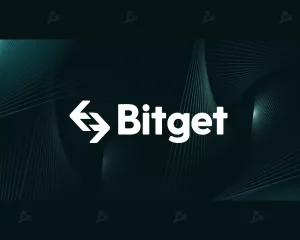The Ultimate Guide to Gamification Technology in Sports Betting

Understanding Gamification Technology
What is Gamification Technology?
Gamification technology is the process of integrating game design elements and principles into non-game contexts to enhance user engagement and motivation. This innovative approach has gained significant traction across various industries, particularly in online gaming and sports betting. By applying elements such as points, badges, leaderboards, challenges, and rewards, organizations can create immersive experiences that encourage participation and interaction. Whether you are a casual player or a seasoned bettor, the application of gamification technology can transform how you engage with platforms and elevate your overall experience.
How It Works in Gaming Environments
In gaming environments, gamification technology works by leveraging user behavior, preferences, and psychological triggers to foster commitment and enjoyment. When players interact with a game or betting platform, gamified elements influence their decisions and stimulate ongoing participation. For example, awarding players with points for completing specific tasks not only promotes competitive spirit but also incentivizes continued engagement.
These principles can be observed in online casinos, sports betting sites, and mobile gaming applications, where interactive features compel users to dive deeper into the platform, leading to longer session times and increased revenue for companies. By implementing a structured approach to gamification, developers can create a seamless interplay between entertainment and functionality, making it beneficial for both players and platforms alike.
Benefits of Gamification in User Engagement
The benefits of gamification in user engagement are manifold. First and foremost, it significantly boosts user interaction by making experiences more enjoyable and rewarding. Players are more likely to engage with platforms where they feel a sense of achievement and progress. Data has shown that gamified systems can improve user retention rates by as much as 40%.
Additionally, gamification fosters community involvement. Leaderboards and collaborative challenges encourage social interaction among players, transforming solitary activities into shared experiences. With users feeling part of a community, they are more likely to return, creating a loyal customer base for gaming companies.
Gamification Technology in Sports Betting
Enhancing User Experience through Gamified Elements
Gamification technology has redefined the user experience in sports betting by enhancing engagement through strategic gamified elements. Betting platforms now use live score updates and in-game betting features that introduce excitement and immediacy into the process. Features such as real-time leaderboards, rewards for frequent betting, and event predictions encourage users to remain active users of the platform.
Moreover, the introduction of “free bet” promotions or challenges tied to specific events can attract both casual and serious bettors. These elements create a narrative that users can follow, making the act of betting feel like a continuous game rather than a series of isolated transactions.
Case Studies: Successful Implementation in Bet Platforms
Several betting platforms have harnessed gamification to increase customer engagement and satisfaction. One notable example is Betfair, which implemented a system that rewards users for placing bets across different sports with points that can be redeemed for various rewards. In doing so, they have noted an uptick in platform engagement and a boost in overall betting volume.
Another successful case is FanDuel, which introduced fantasy sports tournaments with gamified scoring systems. By allowing users to compete against one another and earn prizes based on their performance, FanDuel has solidified its position in the competitive landscape, drawing both new customers and retaining existing ones. These real-world implementations highlight the effectiveness of gamification in driving revenue and enhancing the user experience.
Common Challenges and Solutions
While the implementation of gamification technology offers numerous advantages, it is not without its challenges. One common issue is balancing the game mechanics with actual betting practices. If not handled correctly, gamified elements can obscure the betting process, leading to user confusion and dissatisfaction.
To overcome this challenge, platform developers should prioritize user testing and feedback during the gamification design process. Developing clear onboarding experiences and tutorials that explain how gamified features work can help mitigate confusion. Furthermore, ensuring that the core betting experience remains intuitive and user-friendly is paramount to maintaining customer satisfaction.
The Role of Gamification in Player Retention
Gamification Strategies that Boost Retention Rates
Player retention is vital for the success of any sports betting platform, and gamification strategies play a critical role in achieving high retention rates. Key strategies include implementing achievement systems where users can unlock rewards as they reach specific milestones. This incentivizes repeat visits and encourages users to explore various aspects of the platform.
Additionally, integrating social sharing features allows users to celebrate their achievements with friends and community members. The visibility of these accomplishments can spur friendly competition and further engagement.
Measuring the Effectiveness of Gamified Approaches
To accurately gauge the effectiveness of gamified approaches in enhancing player retention, platforms need to establish specific metrics and KPIs. Metrics like daily active users (DAU), retention rates over different periods (30 days, 60 days), and user engagement levels (time spent on the platform) can effectively measure success.
Instituting A/B testing can also provide insight into which gamified features resonate most with users, allowing developers to refine their strategies continually. Collecting and analyzing player feedback will also play a crucial role in understanding user needs and preferences, fostering innovation in gamified experiences.
User Feedback and Iterative Improvement
User feedback serves as a cornerstone for the iterative improvement of gamified features. Platforms that actively solicit opinions from users and adapt based on that feedback are more likely to cultivate a loyal user base. Surveys, usability tests, and direct engagement with the user community can reveal insightful perspectives on what works and what doesn’t.
Furthermore, keeping a pulse on user engagement metrics after implementing changes can demonstrate the impact of these adjustments on player retention. As users feel valued and heard, they are more likely to remain engaged and enthusiastic about the gaming experience.
Future Trends in Gamification Technology for Casinos
Emerging Technologies Shaping the Landscape
As technology continues to evolve, the landscape of gamification in casinos is set to be transformed. Emerging technologies such as augmented reality (AR) and virtual reality (VR) are being progressively integrated into gaming experiences to create more immersive environments. These technologies can provide users with a compelling alternative to traditional gaming forms, offering interactive and engaging experiences that feel more akin to real-world casinos.
Additionally, artificial intelligence (AI) and machine learning can help to tailor gamified experiences to individual users, offering personalized rewards and challenges based on player behavior. This technological convergence will likely push the boundaries of how users interact with gaming platforms, potentially leading to entirely new forms of gamification.
Predictions for User Engagement in 2025
Looking ahead to 2025, user engagement in gamified experiences is expected to become even more dynamic and personalized. With the advent of sophisticated AI and data analytics, platforms will be able to provide seamless and personalized experiences, catering specifically to individual player preferences and behaviors.
Moreover, the use of blockchain technology for transparent reward systems and decentralized applications may rise, further enhancing trust and engagement among users. With increased competition in the gaming market, platforms will need to innovate constantly, ensuring that they not only adopt new trends but stay ahead of the curve in user engagement tactics.
Innovation in Gamified Casino Experiences
Innovation will be at the center of future gamified experiences in casinos. We are likely to see the emergence of new gaming formats that incorporate storytelling elements and adaptable game mechanics, providing players a unique journey tailored to their individual choices and styles. Collaborative gambling experiences where players can team up to compete against other groups could redefine social engagement, offering a new layer of community involvement.
Additionally, loyalty programs will likely evolve to become more sophisticated, incorporating gamified elements that encourage players to earn rewards not only through betting but through participation in community events, participation in daily challenges, and sharing experiences on social media. These innovations will ensure casinos continue to resonate with users and foster a vibrant, engaged community.
Implementing Gamification Technology: Best Practices
Step-by-Step Guide to Gamification Integration
Implementing gamification technology requires careful planning and strategic execution. Here’s a step-by-step guide:
- Define Clear Objectives: Identify the goals of your gamification strategy—whether they be to enhance user retention, increase engagement, or promote specific behaviors.
- Understand Your Audience: Conduct thorough research to comprehend the preferences and motivations of your target user base.
- Design Engaging Elements: Develop game mechanics that appeal to users, such as points, badges, and challenges that align with your platform’s overall goals.
- Test and Iterate: Employ A/B testing methods to gauge which gamified elements resonate most effectively with users. Collect feedback and adapt accordingly.
- Monitor Performance: Use analytics to track engagement levels, retention rates, and overall user satisfaction. Be prepared to pivot your strategies based on observed outcomes.
Tools and Resources for Developers
Several tools are available to assist developers in the integration of gamification into their platforms. Platforms like Gamify and Badgeville offer robust systems for implementing leaderboards, rewards, and loyalty programs designed specifically for gamification. Additionally, analytics tools such as Google Analytics and Mixpanel can help track user engagement and performance metrics effectively.
Furthermore, online communities and forums can serve as valuable resources for developers seeking insights and best practices from experienced gamification practitioners. Engaging with other professionals in the field exposes developers to fresh ideas and proven approaches.
Metrics to Evaluate Gamification Success
To ensure successful gamification implementation, it is crucial to evaluate the effectiveness of the strategies employed. Important metrics to consider include:
- Engagement Rate: Analyzing how often users participate in gamified elements provides insight into their appeal.
- Retention Metrics: Monitoring return visits and active user statistics helps gauge the impact of gamification on player loyalty.
- Conversion Rates: Assessing how gamification influences bet placements or subscriptions can indicate effectiveness in driving desired outcomes.
- User Feedback: Soliciting ongoing feedback builds a clear understanding of user satisfaction and areas for improvement.




